Plan Your Visit to Yangshao Village Ruins: Tips for History Buffs and Nature Lovers
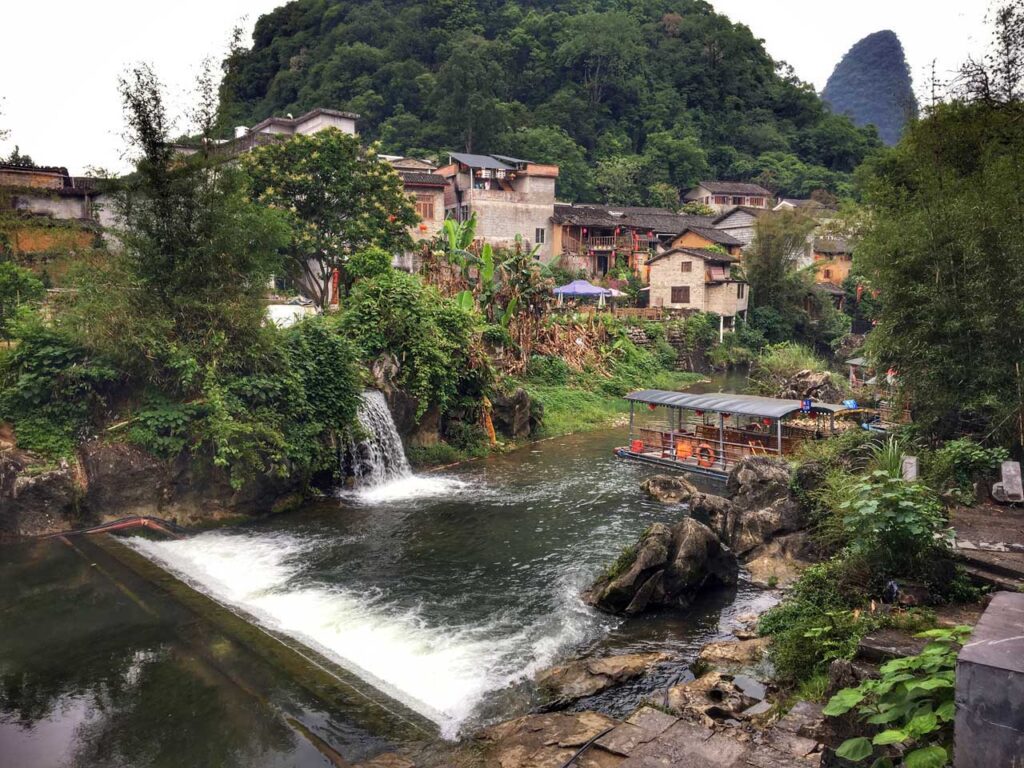
An Essential Guide to Visiting Yangshao Village Ruins
In This Guide
- An Essential Guide to Visiting Yangshao Village Ruins
- The Rich History and Legends of Yangshao Village Ruins
- Main Highlights: What You Absolutely Can’t Miss
- Planning Your Visit: A Practical Guide
- Tickets: Prices, Booking, and Tips
- How to Get There: A Complete Transportation Guide
- Local Cuisine and Accommodation Nearby
- Frequently Asked Questions
- Final Thoughts on Your Trip
Discover the Heart of Neolithic China
Nestled in the serene landscapes of Mianchi County, the Yangshao Village Ruins (仰韶村遗址) are a gateway to one of the most significant archaeological discoveries in Chinese history. Dating back to around 5000 BC, the remnants of the Yangshao culture illuminate a pivotal era in the development of early Chinese civilization. This ancient Neolithic culture, renowned for its exquisite painted pottery, offers a unique glimpse into the everyday life, beliefs, and artistic achievements of our ancestors.
When you visit the Yangshao ruins, you’re not just stepping into a historical site; you’re embarking on a journey through time. The area was first excavated in 1921 by Swedish geologist Johan Andersson, marking a cornerstone in modern Chinese archaeology. As one of the most important archaeological sites along the middle reaches of the Yellow River, Yangshao has been the subject of extensive research, revealing the complexities of a society that thrived on agriculture, pottery, and craftsmanship.
At the heart of your visit is the Yangshao Culture Museum, which serves as both an educational resource and a contemplative space. Here, you can explore artifacts and replicas that showcase the vibrant artistry of Yangshao pottery, while also appreciating the museum’s modern facilities and friendly staff. Although the original pieces are primarily housed in the National Museum in Beijing and the Henan Provincial Museum in Zhengzhou, the museum provides a comprehensive narrative of the Yangshao culture’s significance.
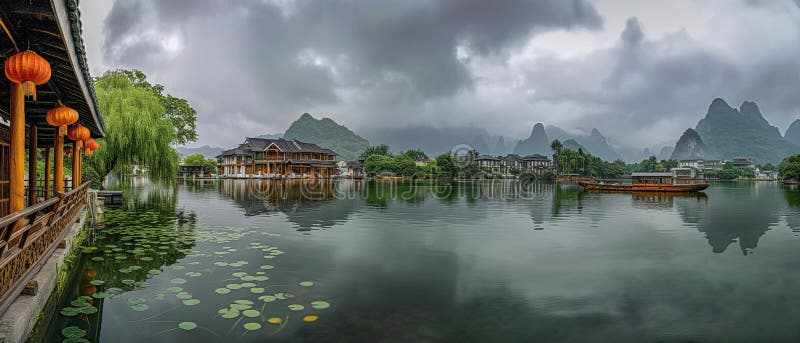
Yangshao Village Ruins.
While the site is somewhat off the beaten path, the journey is worthwhile for those eager to connect with China’s rich historical tapestry. As you wander the grounds, you may come across ancient pottery shards, remnants of cave dwellings, and breathtaking views of the surrounding countryside. Whether you are a serious historian or a curious traveler, the Yangshao Village Ruins promise an enriching experience that resonates with the echoes of a long-lost civilization.
Prepare to immerse yourself in the essence of ancient China as you navigate this fascinating site; the Yangshao Village Ruins await your exploration!
The Rich History and Legends of Yangshao Village Ruins
Unveiling the Heritage of Yangshao Village Ruins
Nestled in the heart of Mianchi County, the Yangshao Village Ruins (仰韶村遗址) are not merely a collection of ancient artifacts; they are a window into one of China’s most significant prehistoric cultures. The Yangshao culture thrived between 5000 BC and 3000 BC, marking a pivotal era in the development of early Chinese civilization.
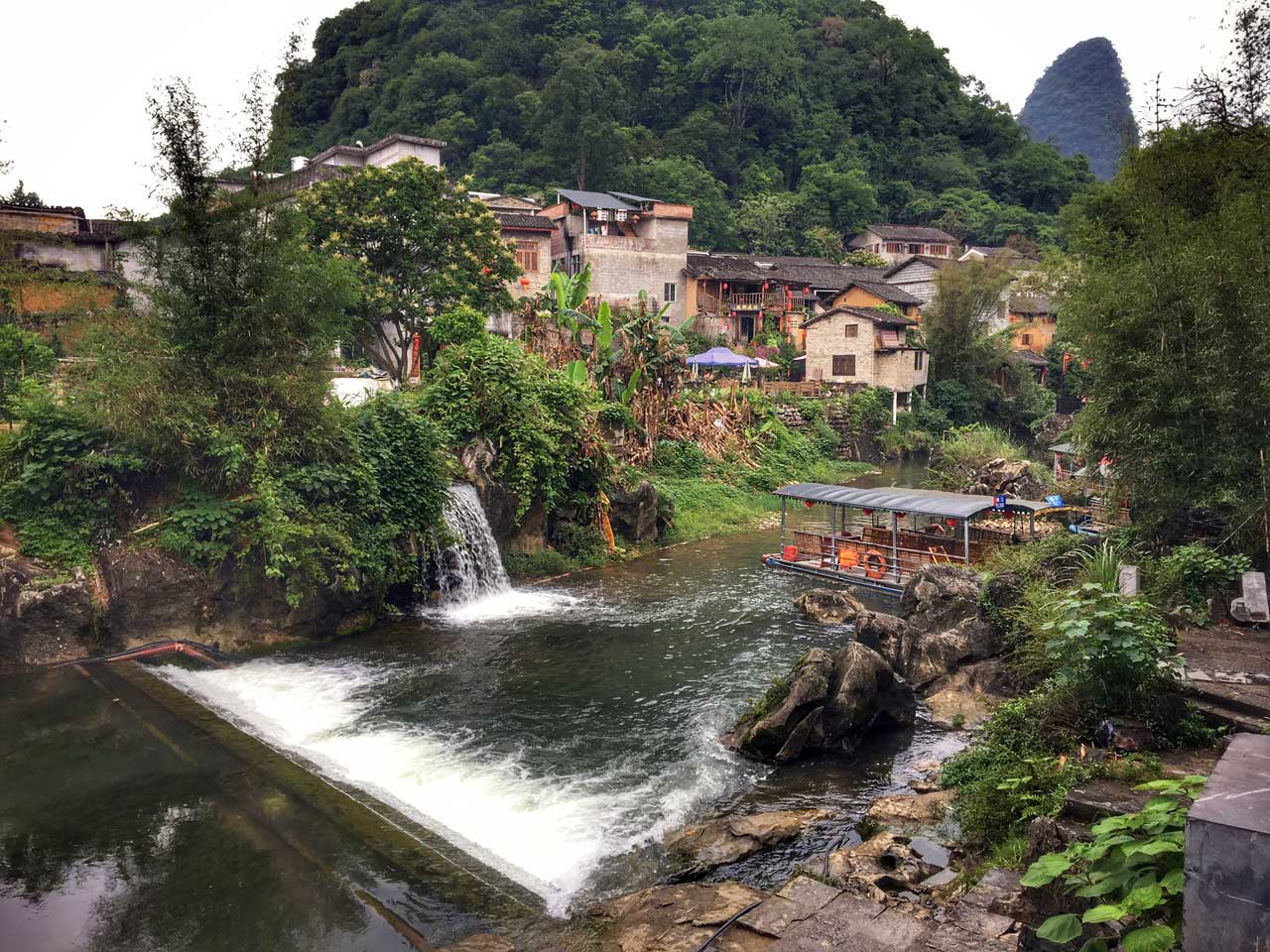
Yangshao Village Ruins.
Archaeological Significance
The discovery of the Yangshao culture in 1921 by Swedish geologist Johan Andersson heralded a new chapter in modern Chinese archaeology. This marked the first comprehensive excavation of the Yangshao site, revealing a rich tapestry of life from the Neolithic period. The remnants unearthed here, particularly the distinctively painted pottery, have led scholars to refer to this cultural phase as the Painted Pottery Culture.
Over 1,000 Yangshao sites have been identified along the middle reaches of the Yellow River, signifying the extensive influence and reach of this ancient civilization. The excavations at Yangshao Village have yielded a wealth of artifacts, from beautifully crafted pottery to tools and remnants of dwellings, providing invaluable insights into the social structure, daily life, and artistic endeavors of its people.

Yangshao Village Ruins.
Legends and Culture
The Yangshao culture is steeped in legends that reflect the values and beliefs of its people. One of the most enduring tales is that of the Pottery Goddess, believed to have gifted the people with the knowledge of pottery-making. This legend celebrates the craftsmanship that characterized the Yangshao culture, where artisans created intricate designs and vibrant colors that adorned their vessels. The artistry of Yangshao pottery was not merely functional; it served as a canvas for storytelling, with motifs that conveyed the spiritual and social narratives of the time.
Additionally, the Yangshao people are thought to have practiced a form of ancestor worship, with burial customs indicating a belief in an afterlife. Grave goods often included pottery and tools, suggesting that the deceased were dispatched with items necessary for their journey beyond.

Yangshao Village Ruins.
The Museum Experience
Today, visitors to the Yangshao Village Ruins can explore a modern museum built on-site that houses many of the artifacts found during excavations. Although much of the finest pottery has been relocated to the National Museum in Beijing and the Henan Provincial Museum, the Yangshao Museum offers a glimpse into this rich heritage with its well-preserved displays and informative exhibits.
The museum provides a shuttle service to the actual excavation site, allowing guests to walk among the remnants of ancient dwellings and discover pottery shards still resting in situ, a tangible connection to the past. While navigating to the site can be challenging—it’s tucked away between the cities of Luoyang and Sanmenxia—the effort is well rewarded for those keen on delving into the depths of China’s prehistoric culture.
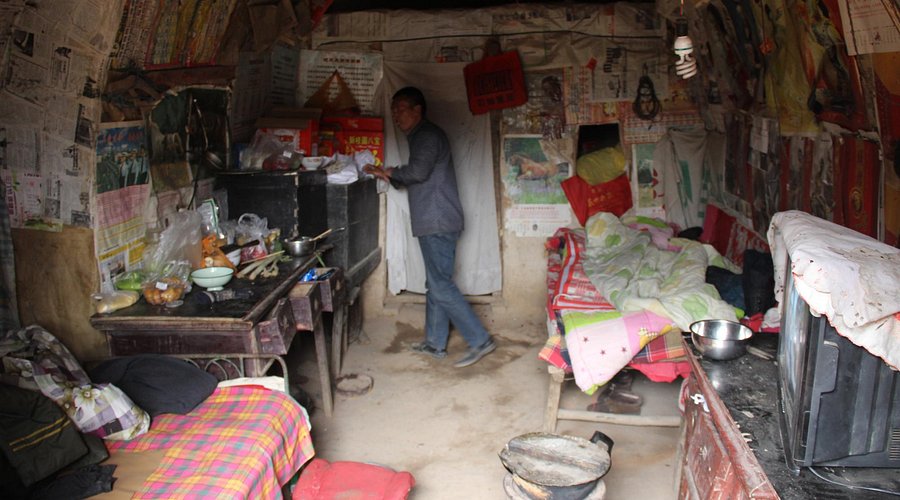
Yangshao Village Ruins.
Conclusion
The Yangshao Village Ruins stand as a testament to the ingenuity and spirit of a people who lived thousands of years ago. For international travelers eager to connect with the roots of Chinese civilization, this site offers not just a historical overview, but also a chance to engage with the legends and artistry that have shaped China’s cultural landscape. Whether you are an avid historian or a curious traveler, the Yangshao Ruins promise a rich and rewarding experience that will linger in your memory long after your visit.
Main Highlights: What You Absolutely Can’t Miss
Must-See Highlights at Yangshao Village Ruins
When exploring the Yangshao Village Ruins, you are stepping into a pivotal chapter of Chinese history, tracing back to one of the earliest Neolithic cultures. Here’s a guide to ensure you don’t miss any of the key highlights during your visit:
1. Yangshao Culture Site
- Historical Significance: First excavated in 1921 by Swedish geologist Johan Andersson, this site is where the Yangshao culture was identified. It represents a profound development in modern Chinese archaeology and is a testament to the sophisticated craftsmanship of early Chinese societies.
- Excavation Area: Wander through the actual excavation site, where you can see pottery shards in situ, offering a direct connection to the past. Although much of the site remains unexcavated, the remnants provide a fascinating glimpse into life thousands of years ago.
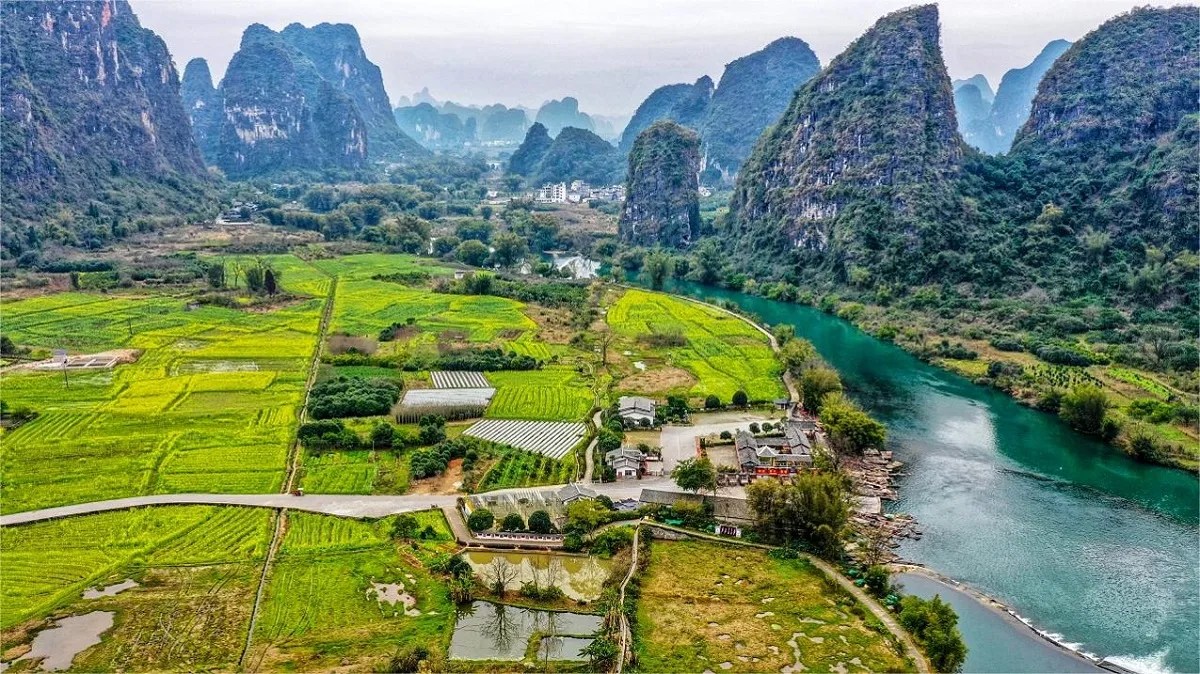
Yangshao Village Ruins.
2. Yangshao Culture Museum
- Modern Insights: Adjacent to the ruins, the museum showcases artifacts and provides context around the Yangshao culture, known for its beautifully painted pottery. While the best examples of Yangshao pottery are housed in larger museums, the Yangshao Museum offers restored pieces and reproductions that help illustrate this vibrant culture.
- Visitor Experience: The museum is equipped with friendly staff and informative exhibits, making it a great place to deepen your understanding of the Yangshao culture. Note: Entry is free, but you must reserve your spot at least a day in advance.
3. Cave Homes of Henan Province
- Cultural Context: Just a short distance from the ruins, you’ll find some of the last remaining cave homes, where locals still live. These dwellings are a unique aspect of the cultural landscape in Henan, providing insight into traditional living practices and the region’s history.
- Photographic Opportunities: The juxtaposition of ancient ruins and these living cave homes makes for stunning photographs that capture the essence of the area’s historical continuity.
4. Pottery and Artifacts
- Distinctive Craftsmanship: The Yangshao culture is renowned for its painted pottery, featuring intricate designs that reflect the artistry of the time. While most original pieces are in major museums, the museum’s collection includes significant replicas and restored items that demonstrate the aesthetic qualities of this ancient craft.
- In-Situ Shards: Look closely at pottery shards found throughout the excavation site, as they provide tangible links to the daily lives of the Neolithic people who once inhabited this area.
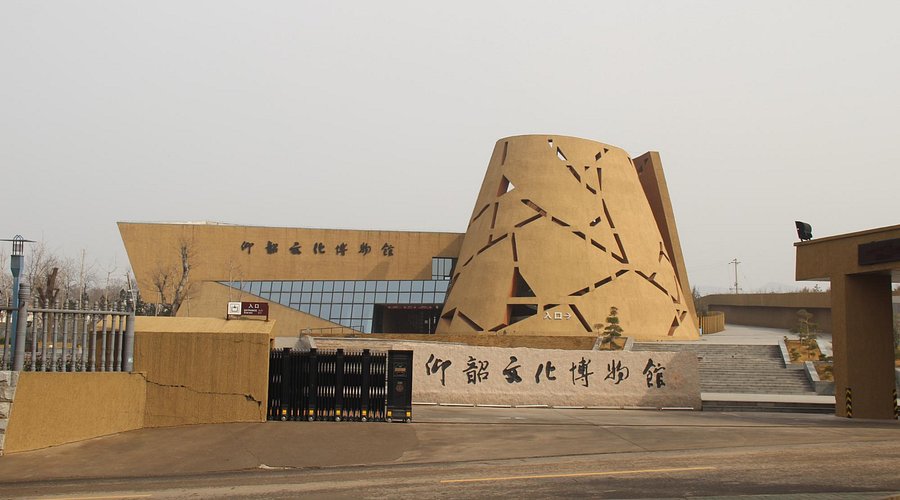
Yangshao Village Ruins.
5. Guided Tours
- Enhance Your Visit: Consider taking a guided tour to fully appreciate the historical significance of the site. Knowledgeable guides can share fascinating stories and detailed insights that will enrich your understanding of the Yangshao culture and its contributions to Chinese civilization.
6. Scenic Surroundings
- Natural Beauty: The Yangshao Village Ruins are set amidst picturesque landscapes, offering opportunities for leisurely walks and photography. Take the time to enjoy the serene environment, which reflects the harmony between nature and ancient human activity.
7. Accessibility Tips
- Getting There: The site is somewhat off the beaten path, situated between Luoyang and Sanmenxia. It’s advisable to arrange for a local driver familiar with the area to ensure a smooth journey. This will allow you to focus on the historical experience rather than navigation.

Yangshao Village Ruins.
Conclusion
Visiting the Yangshao Village Ruins is not just a journey into the past; it is an opportunity to engage with the roots of Chinese civilization. With its rich archaeological heritage and cultural significance, this destination is a must for any traveler passionate about history and culture. Be sure to allocate ample time to explore each highlight, soak up the atmosphere, and reflect on the remarkable legacy of the Yangshao people.
Planning Your Visit: A Practical Guide
Visiting the Yangshao Village Ruins: Your Essential Guide
Exploring the Yangshao Village Ruins (仰韶村遗址) offers a unique glimpse into one of the most significant prehistoric cultures in China. Nestled in Mianchi County, Henan Province, this site is a must-visit for those interested in archaeology, history, and the rich tapestry of Chinese civilization. Here’s everything you need to know for a smooth visit.
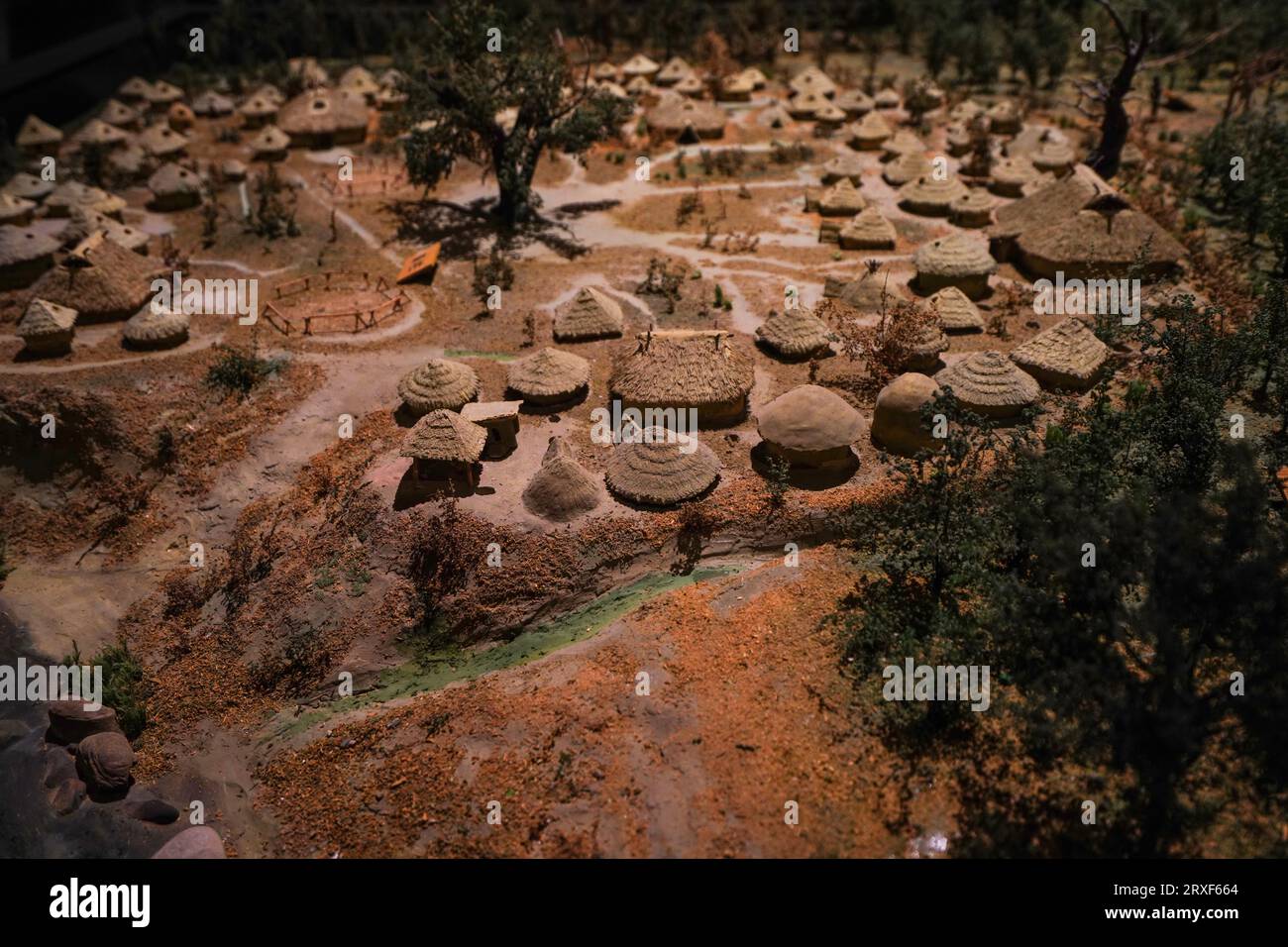
Yangshao Village Ruins.
Getting There
Location: The Yangshao Ruins are situated approximately midway between the historic cities of Luoyang and Sanmenxia, making them a little off the beaten path. You will find the site at Yangshao Village, Yangshao Town, Mianchi County, 472400, China.
Transportation:
– By Car: The most convenient way to reach the ruins is by hiring a local driver or taxi. Due to the site’s remote nature, public transportation options may be limited, and a knowledgeable driver will help navigate the area.
– Shuttle Services: Upon arrival at the Yangshao Culture Museum, visitors can utilize an electric car shuttle that transports guests to the excavation site, which is a short distance away.

Yangshao Village Ruins.
Opening Hours
The Yangshao Culture Museum operates year-round, but with varying hours:
– April to September: 9:00 AM – 5:00 PM
– October to March: 9:00 AM – 4:30 PM
– Closed on Mondays
Tip: It’s advisable to call ahead and make reservations at least one day prior to your visit. You can reach them at 0398-3167836.
Admission Fees
- Entrance: Free
- Reservations are required, so ensure you plan this in advance to avoid any inconvenience.
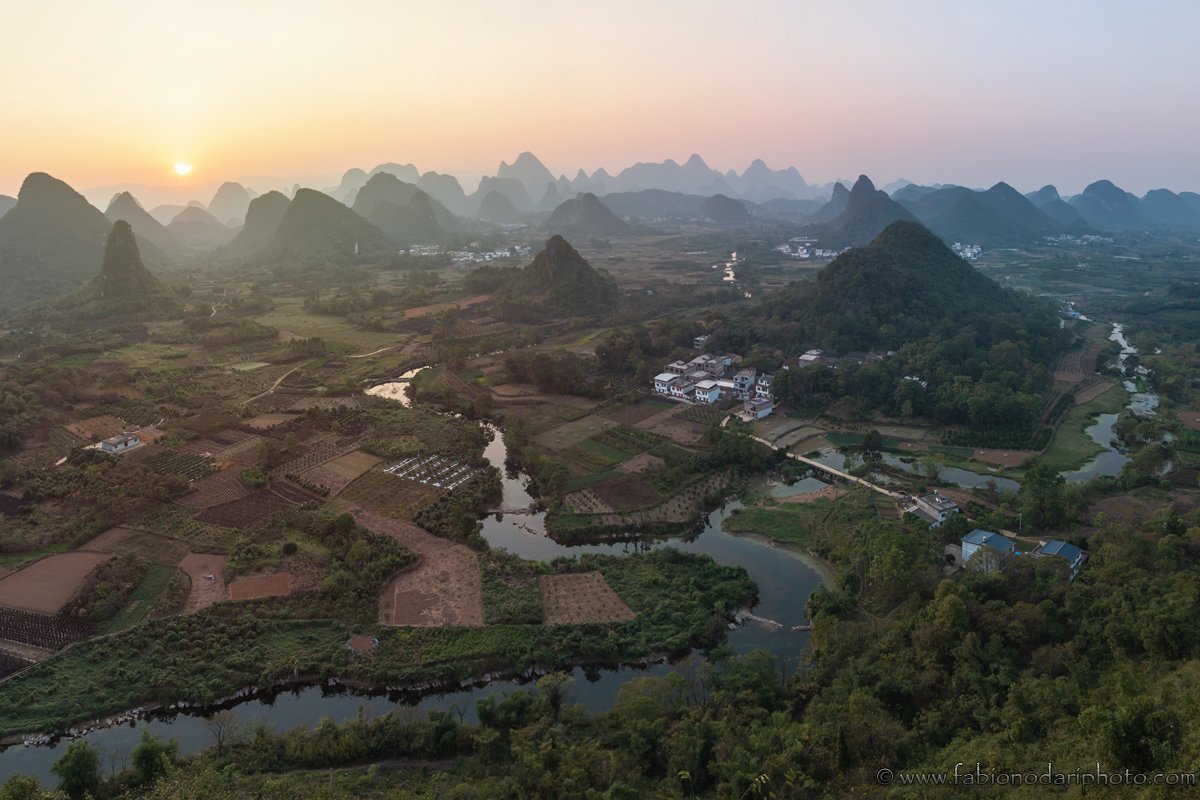
Yangshao Village Ruins.
What to Expect
Historical Significance: The Yangshao culture, which thrived from around 5000 BC to 3000 BC, is renowned for its distinctive painted pottery. This site was first excavated in 1921 by Swedish geologist Johan Andersson, marking a pivotal moment in modern Chinese archaeology.
Museum Experience: The adjacent Yangshao Culture Museum features a range of exhibits showcasing artifacts from the site. While many of the displayed pieces are reproductions, the museum itself is modern and well-maintained, with a helpful staff eager to assist visitors.
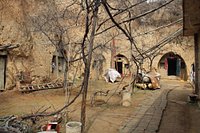
Yangshao Village Ruins.
Excavation Site: One of the highlights of your visit will be the chance to see the actual excavation site where pottery shards can still be found in situ. Although the best examples of Yangshao pottery are housed in the National Museum in Beijing and the Henan Provincial Museum in Zhengzhou, the experience of standing amidst this ancient settlement is truly captivating.
Nearby Attractions
If you find yourself in the Mianchi area, consider exploring these nearby sites:
– Alliance Deck of Qin and Zhao Kingdoms: A fascinating historical site showcasing the architectural achievements of ancient China.
– Gushui River: Ideal for nature walks and appreciating the scenic beauty of Henan Province.
Additional Tips
- Crowd Levels: Expect fewer crowds compared to more prominent tourist sites, allowing for a more intimate experience with the history and culture of the Yangshao people.
- Local Culture: Don’t miss the chance to see some of the remaining cave homes in the area, where locals still reside, providing a glimpse into traditional Henan living.
- Travel Essentials: Bring water, snacks, and a good pair of walking shoes, as exploring the site can involve some walking.
Conclusion
The Yangshao Village Ruins offer a profound connection to China’s prehistoric past, making it an essential stop for history enthusiasts and curious travelers alike. With proper planning, you can immerse yourself in the rich cultural heritage of the Yangshao people and gain insights into one of the earliest civilizations in China. Enjoy your journey into history!
Tickets: Prices, Booking, and Tips
Ticket Information for Yangshao Village Ruins
Visiting the Yangshao Village Ruins is a journey into ancient Chinese history, specifically the Neolithic Yangshao culture, which flourished around 5000 to 3000 BC. Here’s everything you need to know about tickets, booking, and some handy tips to enhance your visit.
Entrance Fee
- Admission: Free
- Reservation Requirement: Visitors must make an advance reservation at least one day prior to their visit. This can be done by calling the museum at 0398-3167836.
Opening Hours
- April to September: 9:00 AM – 5:00 PM
- October to March: 9:00 AM – 4:30 PM
- Closed: Mondays
Booking Tips
-
Plan Ahead: Given the requirement for advance bookings, it’s advisable to call and reserve your spot as early as possible. This is especially important during peak travel seasons when visitor numbers can be high.
-
Know Your Route: The Yangshao Village Ruins are located in Mianchi County, midway between Luoyang and Sanmenxia. Since it’s somewhat off the beaten path, hiring a local driver or guide familiar with the area can be beneficial.
-
Prepare for the Weather: The site is open year-round, but the hours change with the seasons. Dress appropriately for the weather conditions, especially if you plan to explore the outdoor excavation areas.
-
Combine Visits: If you’re in the area, consider combining your visit to the Yangshao Ruins with nearby attractions, such as the Yangshao Culture Museum or the scenic spots along the Yellow River.
-
Enjoy the Experience: The site is relatively uncrowded compared to other historical attractions, allowing for a more intimate exploration of the remnants of the Yangshao culture. Take your time to appreciate the significance of this archaeological site.
Getting There
- Transport: Given its location, access to the ruins may require some planning. It’s advisable to arrange for transportation in advance, whether through local travel agencies or by negotiating with local drivers.
By following these guidelines, your visit to the Yangshao Village Ruins will not only be enriching but also smooth and enjoyable. Delve into the world of ancient Chinese civilization and witness firsthand the remnants of the Painted Pottery Culture that have fascinated historians and archaeologists alike.
How to Get There: A Complete Transportation Guide
Getting to Yangshao Village Ruins
Visiting the Yangshao Village Ruins (仰韶村遗址) is a rewarding journey that immerses you in the cradle of Chinese civilization. Located in Mianchi County, Henan Province, this site offers a glimpse into the Neolithic Yangshao culture, famed for its exquisite pottery and historical significance. Since it is somewhat off the beaten path, planning your transportation carefully will enhance your visit. Here’s your complete guide on how to get there.
1. Arriving in China
Major International Airports:
– Beijing Capital International Airport (PEK): The most common entry point for international travelers.
– Shanghai Pudong International Airport (PVG): Another major hub with numerous international flights.
– Xi’an Xianyang International Airport (XIY): Closer to Henan Province and ideal for those heading straight to the region.
From these airports, you can connect to domestic flights or other modes of transportation.
2. Domestic Travel to Mianchi County
By Air:
– Luoyang Airport (LYA): The closest airport to Yangshao Village Ruins. Once you arrive, the site is approximately 80 kilometers (about 50 miles) away.
– Zhengzhou Airport (CGO): About 130 kilometers (80 miles) from the ruins, this airport offers more flight options.
From either airport, you can hire a taxi or arrange for a local driver to take you to the ruins.
By Train:
– High-Speed Rail: Take a high-speed train to Luoyang or Sanmenxia from major cities like Beijing, Shanghai, or Xi’an.
– Once in Luoyang or Sanmenxia, you will need to hire a taxi or use a local ride-sharing service to reach Yangshao Village.
3. Local Transportation Options
Taxi Services:
Local taxis are available for hire in both Luoyang and Sanmenxia. The drivers are generally familiar with the Yangshao area, but it’s advisable to have the address written in Chinese or use a translation app.
Private Car Hire:
For a more comfortable and flexible option, consider hiring a private driver for the day. This is especially useful for navigating the rural roads leading to the ruins. Many local tour companies can arrange this service.
Public Transportation:
While buses do operate in the region, they may not be the most efficient option for international travelers due to potential language barriers and infrequent schedules. It’s recommended to use taxis or private drivers instead.
4. Visiting the Site
Yangshao Culture Museum Shuttle:
Upon arriving at the Yangshao Culture Museum, you will find that it offers an electric shuttle service to the excavation site, a short distance away. This is a convenient way to explore both the museum and the ruins without the hassle of walking.
5. Tips for Your Journey
- Advance Planning: It’s wise to make arrangements in advance, especially if you are traveling during peak seasons or holidays.
- Language: English is not widely spoken in this rural area, so having key phrases in Mandarin or a translation app can be very helpful.
- Stay Hydrated: Bring water with you, as exploring the ruins can be tiring, especially during the summer months.
- Respect Local Customs: When visiting, be mindful of the local culture and practices, especially in rural areas.
With this guide in hand, you’re well on your way to experiencing the historical tapestry of the Yangshao culture. Enjoy your adventure into one of China’s most fascinating archaeological sites!
Local Cuisine and Accommodation Nearby
Exploring Local Flavors and Comfortable Stays Near Yangshao Village Ruins
Visiting the Yangshao Village Ruins is not just a journey through ancient history; it’s also an opportunity to savor the rich culinary traditions of the region and find a cozy place to rest after a day of exploration. Here’s a guide to some local delicacies and accommodation options that will enhance your experience.
Local Cuisine to Savor
-
Yangshao Noodles (仰韶面条)
A must-try when in Mianchi County, these handmade noodles are often served in a rich broth with fresh vegetables and tender meat. The chewy texture of the noodles, combined with the savory flavors, makes for a satisfying meal after a day of archaeological exploration. -
Painted Pottery Dumplings (彩陶饺子)
Named after the vibrant pottery of the Yangshao culture, these dumplings are filled with a mix of local vegetables and meats. They are typically steamed or boiled, allowing the flavors to meld beautifully. Pair them with a dipping sauce for an authentic taste. -
Local Pickled Vegetables (腌制蔬菜)
A staple in many Chinese households, these pickled delights are commonly served as side dishes. Made from seasonal vegetables, they offer a tangy crunch that complements heavier mains beautifully. -
Henan Roast Duck (河南烤鸭)
Known for its crispy skin and tender meat, this dish is a regional favorite. It is usually served with pancakes, hoisin sauce, and sliced vegetables, allowing diners to create their own flavorful wraps. -
Sesame Seed Cakes (芝麻饼)
For a sweet treat, try the local sesame seed cakes. These crispy, flaky pastries are often enjoyed with tea and provide a perfect end to your meal.
Where to Stay
-
Yangshao Culture Hotel (仰韶文化酒店)
Situated close to the museum and ruins, this hotel offers comfortable accommodations with a traditional Chinese aesthetic. Guests can enjoy amenities such as free Wi-Fi, a restaurant serving local cuisine, and guided tours to nearby attractions. The hotel staff are known for their hospitality, ensuring a welcoming stay. -
Mianchi County Guesthouse (渑池县招待所)
For travelers seeking a more budget-friendly option, the Mianchi County Guesthouse provides basic yet comfortable rooms. It’s conveniently located, making it easy to access the Yangshao Ruins and surrounding sites. The guesthouse also has a communal kitchen where guests can prepare their own meals. -
Shangri-La Inn (香格里拉宾馆)
A bit further afield, this inn is known for its beautiful views of the countryside. The rooms are modern and well-appointed, and the on-site restaurant features a variety of both local and international dishes. It’s an excellent choice for those looking to relax in a tranquil setting after a day of exploration. -
Cave Homestays (洞穴民宿)
For a unique experience, consider staying in one of the traditional cave homes that are still inhabited by local families. This type of accommodation offers a glimpse into the lifestyle of the area’s residents and is often accompanied by homemade meals featuring local ingredients.
Final Thoughts
The Yangshao Village Ruins offer a fascinating glimpse into ancient Chinese culture, and complementing your visit with local cuisine and comfortable accommodations will surely enrich your experience. Whether you’re indulging in flavorful dishes or finding rest in a welcoming space, Mianchi County provides a warm embrace of history and hospitality.
Frequently Asked Questions
Frequently Asked Questions
1. What is the Yangshao Culture?
The Yangshao Culture, which thrived from around 5000 BC to 3000 BC, is one of the most significant Neolithic cultures in China. Known for its beautifully decorated pottery, it is often referred to as the “Painted Pottery Culture.” Over 1,000 sites have been discovered along the middle reaches of the Yellow River, with the Yangshao Village Ruins being one of the most notable.
2. Where is the Yangshao Village Ruins located?
The Yangshao Village Ruins are situated in Mianchi County, Henan Province, China. It lies approximately midway between the cities of Luoyang and Sanmenxia, making it somewhat off the beaten path. Visitors are advised to arrange for a local driver familiar with the area for easy access.
3. What can I expect to see at the site?
Visitors can explore the actual excavation site where pottery shards and other artifacts are still visible in situ. Additionally, a modern museum has been established nearby, housing various exhibits related to the Yangshao culture, including pottery and historical artifacts. Notably, some cave homes of Henan Province are also found in the vicinity, showcasing traditional living conditions.
4. Are there any entrance fees?
Admission to the Yangshao Culture Museum and site is free, but visitors must make an advance reservation at least one day prior to their visit. You can do this by calling the museum directly.
5. What are the opening hours?
The museum is open from 9:00 AM to 5:00 PM from April to September and from 9:00 AM to 4:30 PM from October to March. Please note that it is closed on Mondays.
6. How can I get to the Yangshao Ruins?
Due to its remote location, it is recommended to hire a local driver or guide who knows the area well. Public transportation options may be limited, so arranging a private tour or taxi in advance is advisable for a smooth journey.
7. Is the site suitable for children and families?
Yes, the Yangshao Village Ruins are suitable for children and families. The site offers an educational experience about ancient Chinese culture and history, making it a perfect outing for those interested in archaeology and anthropology.
8. Are there any nearby attractions worth visiting?
Yes, several attractions are located near the Yangshao Ruins, including the Alliance Deck of Qin and Zhao Kingdoms and Shaoshan Mountain. Additionally, the Longmen Grottoes and Shaolin Temple are popular destinations that can be incorporated into a day trip from the area.
Final Thoughts on Your Trip
As you conclude your journey through the mesmerizing landscape of the Yangshao Village Ruins, take a moment to reflect on the rich tapestry of history that unfolds around you. This site, revered as the cradle of the Yangshao culture, beckons you to immerse yourself in the essence of ancient Chinese civilization. Here are some final thoughts to inspire your visit:
A Journey Through Time
-
Historical Significance: The Yangshao culture, which flourished from approximately 5000 to 3000 BC, is not merely an archaeological site but a testament to the ingenuity and artistic spirit of its people. The beautifully decorated pottery, emblematic of this culture, showcases the sophistication of their craftsmanship and provides invaluable insights into their daily lives.
-
Unique Experiences: As you walk through the museum and the surrounding excavation site, imagine the lives of those who once thrived here. Look closely at the remnants of pottery shards and the cave homes that continue to tell their story. These elements offer a rare glimpse into the Neolithic era, setting this location apart from other historical sites.
Embrace the Adventure
-
Off the Beaten Path: The journey to the Yangshao Ruins may require some navigation skills, as it lies between Luoyang and Sanmenxia, away from the typical tourist trails. However, this detour is well worth it for those seeking a profound connection to China’s ancient past. Engage a local driver for an authentic adventure that transforms the trip into a memorable exploration.
-
Cultural Immersion: The Yangshao Culture Museum, with its modern facilities and informative displays, complements your visit perfectly. Don’t miss the chance to interact with the friendly staff, who can enrich your understanding of this significant site. As you explore, embrace the tranquil atmosphere that allows for quiet contemplation of the history that surrounds you.
Final Reflections
In the end, your trip to the Yangshao Village Ruins is not just about witnessing history; it’s about experiencing the echoes of a time long past. Allow yourself to be inspired by the resilience of the human spirit and the artistry that has endured through millennia. Cherish the stories that these ruins hold, and carry the wisdom of the Yangshao culture with you, wherever your travels may take you next.
Your journey through the heart of Chinese history will leave an indelible mark, reminding you that every stone and shard has a tale to tell. Safe travels, and may your future explorations be as enriching as your time at the Yangshao Ruins!